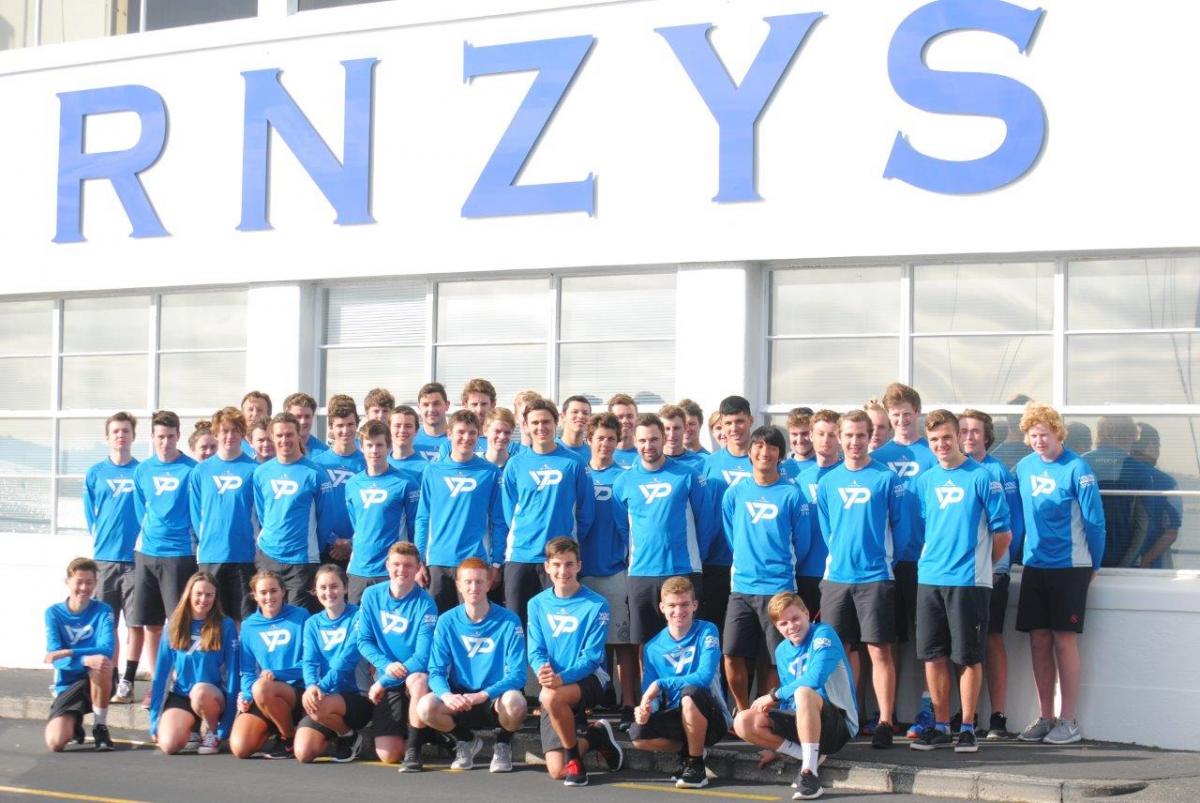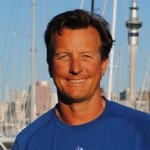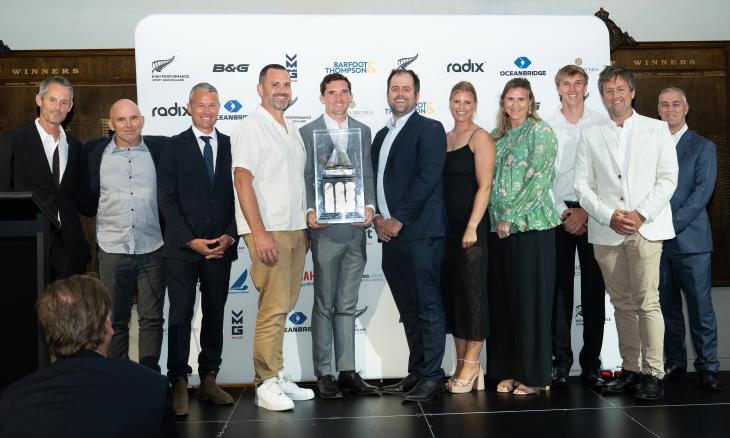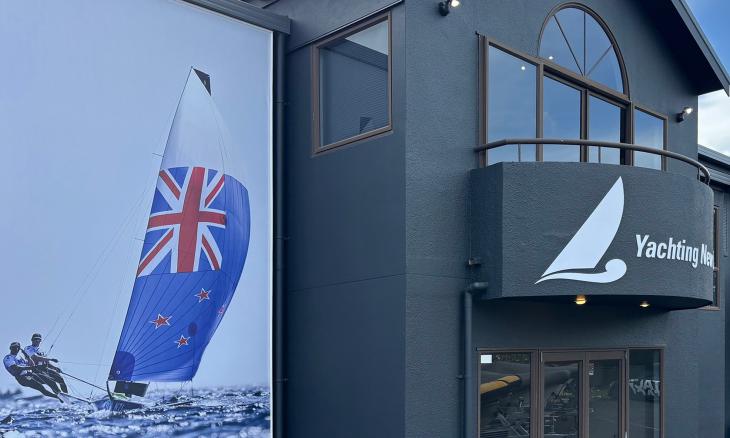A scan through the list of sailors involved in the recent Extreme Sailing Series in Oman goes a long way to measuring the success of the youth training programme run out of the Royal New Zealand Yacht Squadron.
(The RNZYS team competing in the Extreme Sailing Series in Oman recently. Photo: Extreme Sailing Series)
Nine sailors, including three helmsmen (Phil Robertson, Adam Minoprio and Chris Steele), were scattered throughout the nine-strong fleet and that didn’t take into account the NZL Sailing Team who were using the regatta as valuable race practice ahead of June’s Red Bull Youth America’s Cup.
The youth training programme has been seen as a world leader since it was created in 1987, producing graduates who have gone on to excel on the world stage.
But it’s about to go through a transition period with Guy Pilkington stepping down today from his role as training manager – a position he has held for the past 12 years. Reuben Corbett, a former regular on the World Match Racing Circuit, will take over.
Pilkington said it was a tough decision but, with three of his four children involved in sailing and with the training programme run predominantly over weekends, wants to spend more time with his family.
“With the role I have, I work weekends and it gets a bit tough sometimes when they (my children) are all away competing and I’m working,” he says. “I have 48 kids here and four at home.”
He leaves the programme in really good shape and one that looks different to what he inherited 12 years ago. An emphasis was put on getting younger sailors back onto members’ keelboats, one of the reasons the programme was set up in the first place, while also teaching them skills off the water.

As many as 48 youth sailors aged between 15 and 21 are in the programme each year and most undergo two or three of training. They do about 35-40 sailing days annually and are required to attend most weekends.
“The programme still had a good reputation but it felt like it had lost its way a bit,” Pilkington says of when he took over. “We just tried to bring it back in so the members were really proud of what we were doing.
“We had a relationship with Team New Zealand and it was a good pathway and a lot of graduates went on to be professional sailors. We wanted to re-emphasise that there was a pathway but that you needed to learn how to behave on and off the water. It’s not just sailing.
“The game has changed now it’s professional. We brought in things like a uniform at regattas, names on the back. We tried to run it like a mini Volvo or Cup campaign so the kids had ownership of what we were trying to achieve. But it also built our brand, which is really important.
“We worked hard on the water but also off the water - how to dress, manners, public speaking, how to behave – so that when we went to regattas people noticed us.”
It was hard not to notice them at times.
A Squadron team won back-to-back Governor’s Cup titles in the mid-2000s, along with the Harken Cup at the Royal Prince Alfred (Squadron teams dominated the podium one year) and sustained success in their own event, the Nespresso Youth International Match Racing Championships. They also finished second to Team New Zealand at the Young 88 nationals and a youth team won Bay Week in a 44-footer.
“There are some pretty cool things we have done with the youth team” Pilkington reflects.
There have also been challenges.

(Guy Pilkington)
“Dealing with teenagers,” he says wryly. “It’s just trying to keep them on task and making sure they turn up and want to go sailing because they have busy lives with school, university or work.
“Being young they had their opinions, which is a good thing. But in sailing there’s always one boss. There’s a golden rule that the man with the gold rules. If you want to join a campaign, you have to deal with that some don’t deal with it very well. That’s part of growing up.”
The programme has also evolved.
They led the world in training when they commissioned a fleet of Elliott 5.9s and over time moved into Elliott 6s and Elliott 7s. In another world first, they recently introduced a foiling component to their performance programme.
They acquired two foiling Nacra 20 catamarans from Emirates Team New Zealand with the aim of producing sailors capable of competing in a world match racing tour qualifier and, eventually, the Red Bull Foiling Generation and Red Bull Youth America’s Cup.
“When Team New Zealand started foiling, it was always in our minds that we needed to go down that track because we had lost the pathway back to the Cup,” Pilkington says.
It has also opened up opportunities in the Extreme Sailing Series and a Squadron team skippered by Chris Steele are taking part in this year’s series.
Training programme graduates are scattered throughout the world and a handful, including Guy Endean and Sam Bell on the sailing side, are involved with Emirates Team New Zealand.
It’s only natural many more of Pilkington’s 'children’ will continue to achieve great success.



